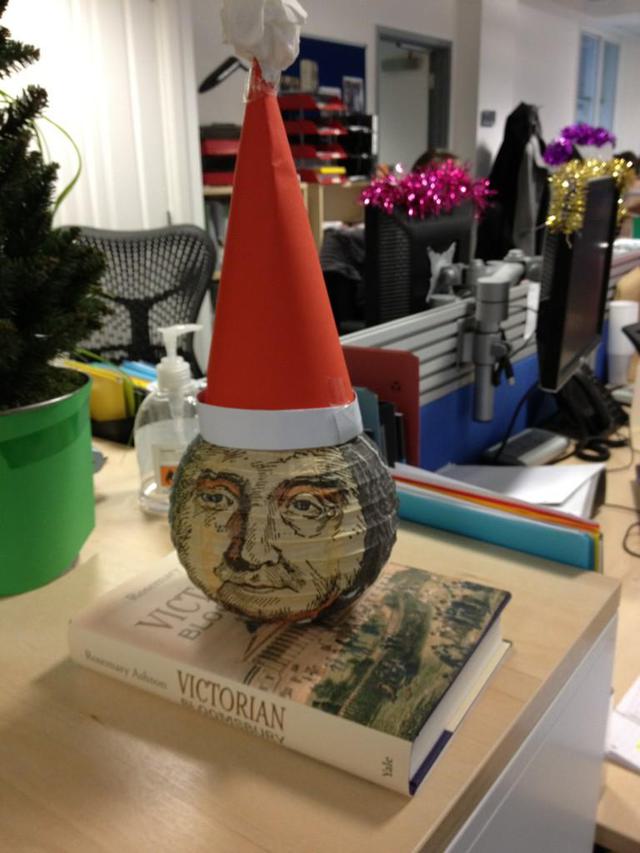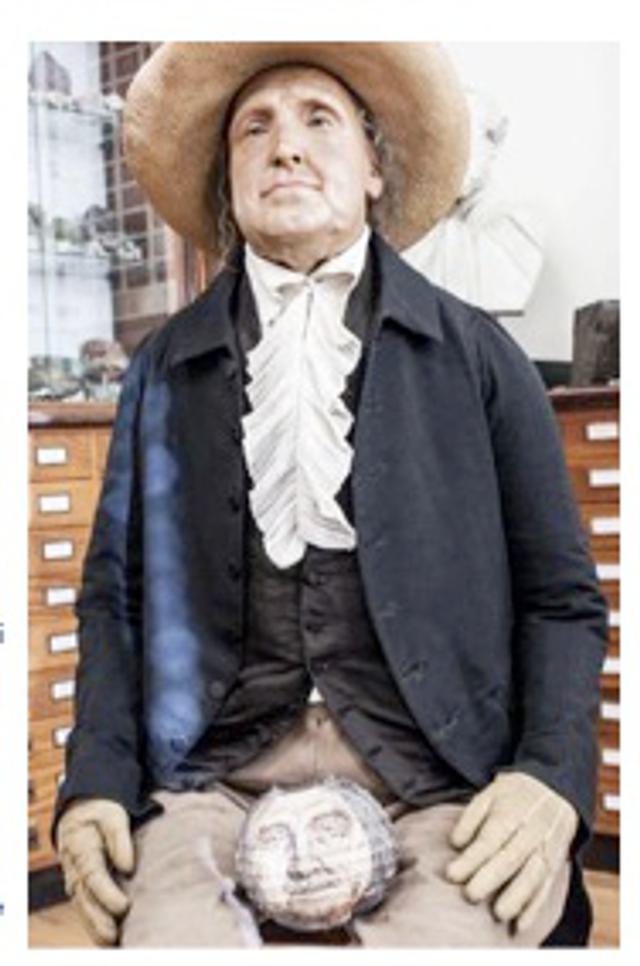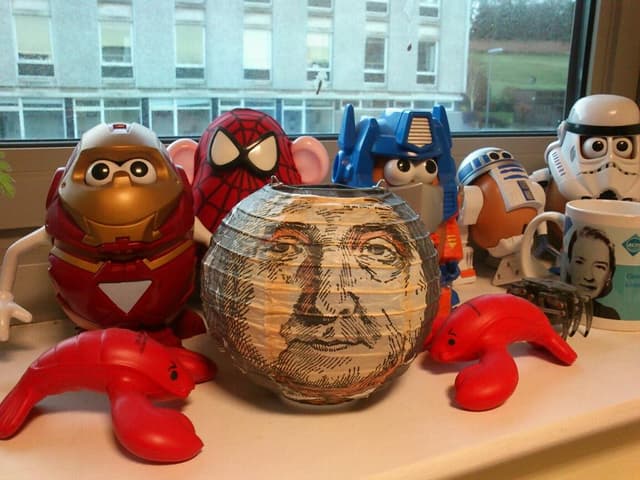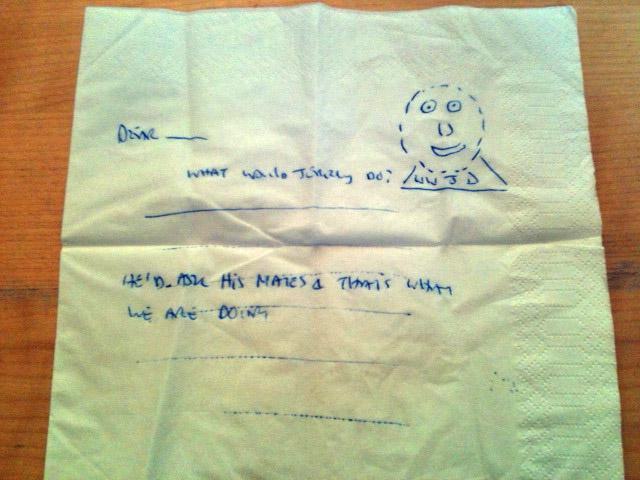University College London: the ‘paper head’ Christmas appeal
- Exhibited by
- Aline Reed
- Added
- December 17, 2012
- Medium of Communication
- Direct mail
- Target Audience
- Individuals
- Type of Charity
- Education
- Country of Origin
- UK
- Date of first appearance
- October, 2012
SOFII’s view
This truly innovative campaign has many outstanding features and, possibly, the main one is that if you really know your supporters you will achieve great success. Hamish Stewart, head of regular giving at University College London, knew that anything from Jeremy Bentham would inspire UCL’s alumni to action.
There was only one problem, he’s been dead for 180 years. So it’s not really surprising that Aline Reed, head of creative at Bluefrog in London was a little stumped. But not for long, after some research and scribbling from managing director Mark Phillips they came up with the great idea of a ‘ransom in reverse’ of Jeremy Bentham’s head. If you think this is getting more and more weird, you’ll be delighted to discover that it worked extremely well.
To ask alumni and friends of University College London (UCL) all over the world to make a commitement of £100 to ‘help UCL continue to inspire radical thinking’.
Background
When I presented Great Ormond Street Hospital’s wartime appeal at SOFII’s ‘I wish I’d thought of that’ event in London earlier this year I hoped people would love it as much as I do and, as a parting shot, I mentioned where I found it. It was for sale (or rather had just sold) on a nostalgia website.
It seemed amazing to me that an appeal – something so intrinsically disposable – had survived 70+ years and was now prized as a possession, so much so that someone paid money for it. I’d have bought it myself if someone hadn’t got there first.
If you had told me then that something similar would happen to an appeal I had worked on, I don’t think I’d have believed you, but you can see the evidence on the left. This paper lantern of Jeremy Bentham’s head was sent to UCL alumni as part of a fundraising appeal. It was put on E-Bay and was sold for many times its cost price.
If you are involved in alumni fundraising, this is clearly relevant. But if you aren’t – if you work for a ‘regular’ charity – I would encourage you to read on because there might be things a ‘regular’ charity can learn from a university.
So first an explanation, I’ll come clean – it turns out, after all these years, I can’t recognise a good brief when it’s staring me in the face. To my eternal shame, the UCL brief to bring philosopher and jurist Jeremy Bentham back to life to raise money for UCL caused me to frown, ask ‘you want to do what?’ and generally feel rather puzzled for a number of days.
Bentham gave a donation to help establish UCL and his radical thinking inspires students to this day. His auto-icon (dressed skeleton) sits in the South Cloisters and there probably isn’t a UCL student who hasn’t paid him a visit. The day I went to pay my respects, there was a queue of new undergraduates waiting to have their photo taken with him.
Special characteristics
When we discovered that Jeremy’s head had been stolen by students from a rival academic institution back in the 1970s, our idea was complete. Inspired by having his head held ransom, Jeremy would carry out a kind of ‘ransom in reverse’, sending his head to alumni and asking for a donation in its place.
Like every good appeal, there was a strong ‘need’ element. The Government has withdrawn the majority of its funding for higher education and the rise in fees means there’s an increased demand for scholarships. Jeremy Bentham took to modern technology with great enthusiasm to send emails and to write to former students and ask for their support.
Influence / Impact
There’s a further characteristic that the Great Ormond Street Hospital and Jeremy Bentham appeal have in common. They’ve both generated media coverage. An Australian newspaper told the story of the piece of rubble that travelled around the world to raise money for the reconstruction of the hospital.
The Jeremy Bentham appeal got a write up in the New York Times and, better still, alumni took to Facebook and Twitter to show what they did with their Jeremy Bentham paper lantern.
Results
I think I’d call it one of the more unusual fundraising campaigns I’ve worked on. But it’s worked. After four weeks’ response, it’s UCL’s most successful DM appeal yet. We’ve already recruited more new DM donors than last year and there’s the reminder still to come. That also comes from Jeremy Bentham.
Merits
Here are a few things this appeal reminds us of:
- Connection: Hamish Stewart at UCL knows his audience. He realised that Jeremy Bentham would re-awaken alumni’s memories of UCL and its tradition of radical thinking.
- Need: fundraising isn’t just about showing need. There’s lots of need. You also need to connect with your donor and maybe even delight them with what they receive.
- Test: if you’ve got a brave idea, try testing it in a place where you can get some sense of the response. In this case, we offered Jeremy’s head to alumni in a small spot on their magazine carrier sheet. We thought we might get a handful of responses and, if we didn’t get any complaints, we’d have been pleased. We got over a thousand requests for a head.
- Engage: when thinking about a signatory, don’t limit yourself to the living!
- Inspire: finding supporters can be like going fishing with a net. It’s more rewarding to find a magnet and attract supporters to you. That’s what Jeremy’s head does.
Bluefrog / University College of London.
SOFII's I Wish I'd Thought Of That IWITOT Toronto 2013 – Jane Leaver
 View original image
View original image
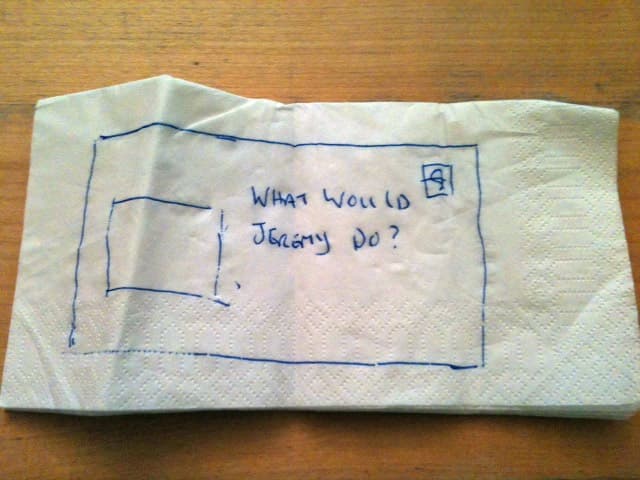 View original image
View original image
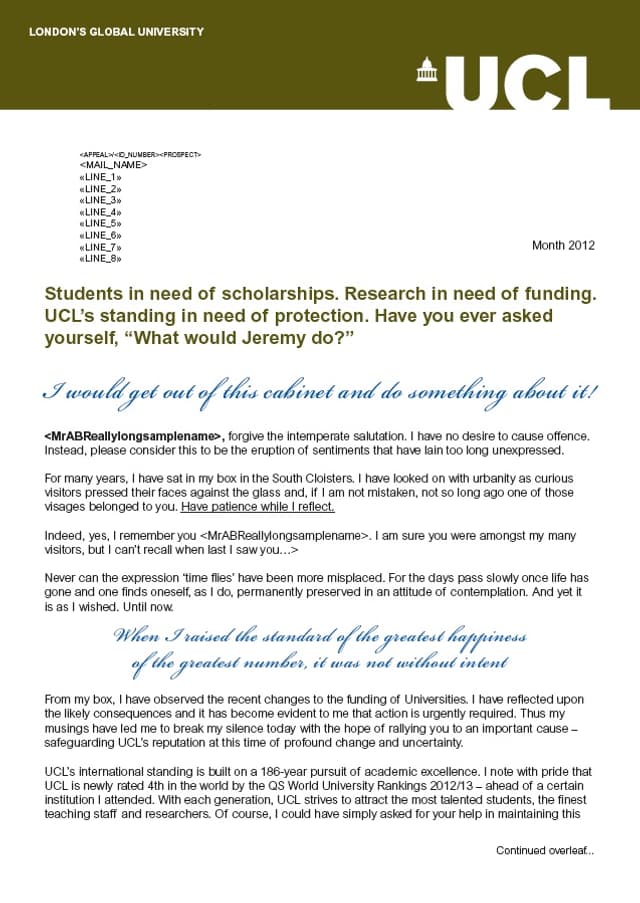 View original image
View original image
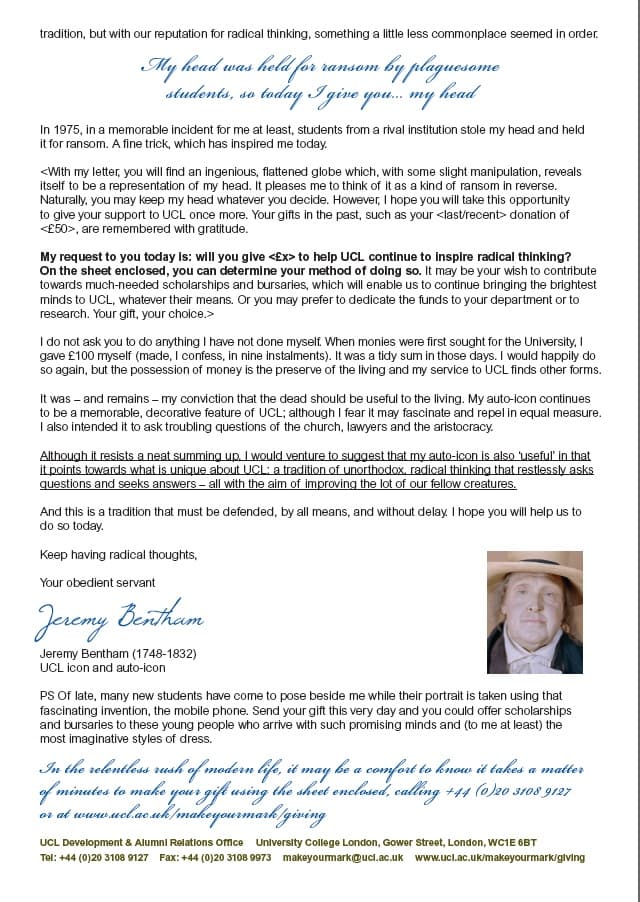 View original image
View original image
